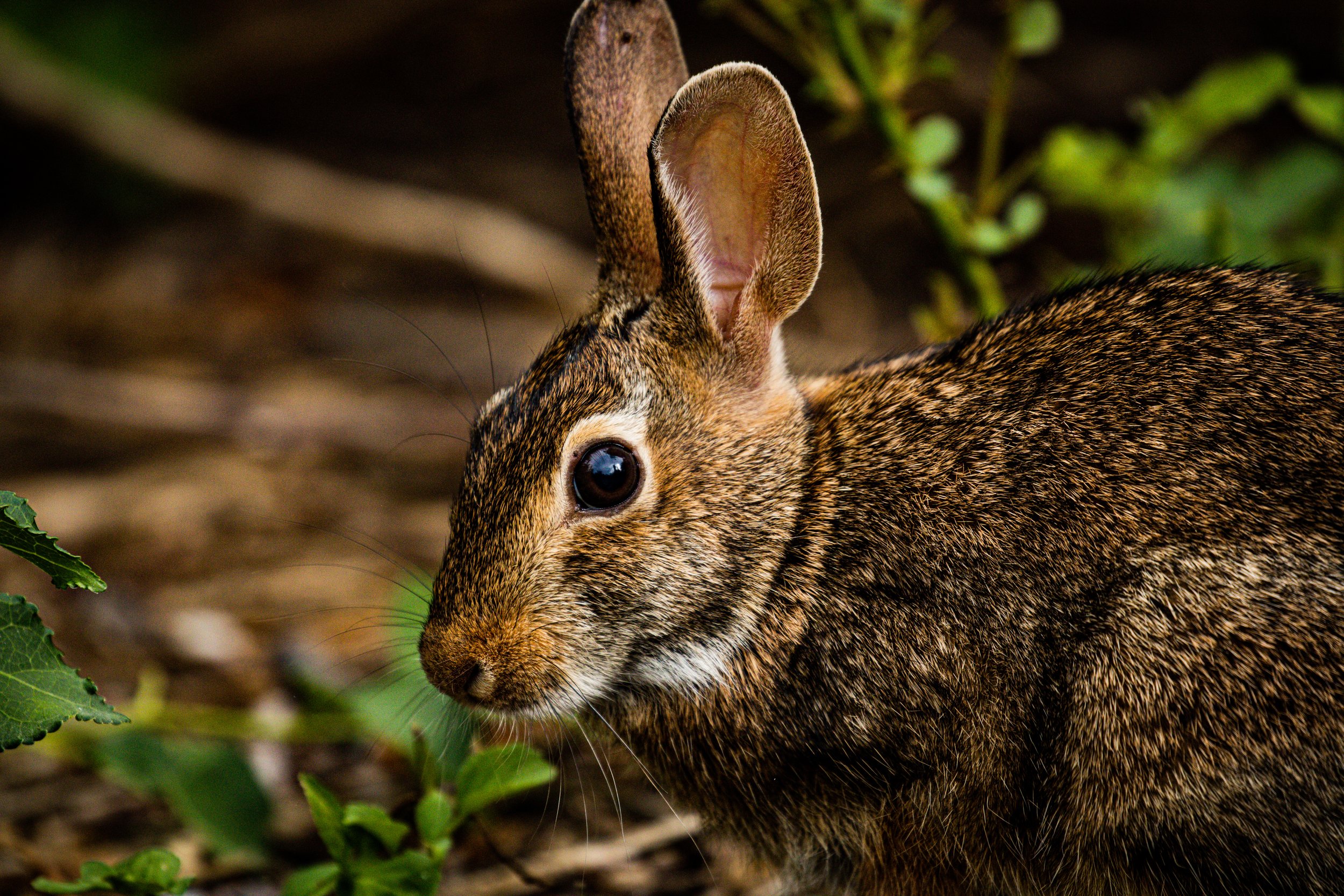Snowshoe Hare and Eastern Cottontail
The story of the tortoise and the hare is a classic, but the actual differences between a hare and an eastern cottontail rabbit are fascinating. Here’s a breakdown:
1. Physical Differences
Size: Hares are generally larger than eastern cottontails, with longer ears and more powerful hind legs.
Fur: Hares often have black-tipped fur and seasonal coat changes, turning white in winter for camouflage in snow. Eastern cottontails do not change color seasonally and have a characteristic reddish-brown coat with a white underside.
Tail: Eastern cottontails are named for their fluffy white tails, resembling a cotton ball. Hares also have short tails but lack the distinct "cottony" appearance.
2. Habitat
Hares: Prefer open areas like fields, meadows, and tundra. They are less likely to be found in dense vegetation.
Eastern Cottontails: Found in a variety of habitats, including woodlands, brushy areas, and suburban backyards, favoring places with plenty of cover.
3. Behavior
Nesting: Hares give birth to their young in shallow depressions in the ground, known as forms. The babies (leverets) are born fully furred and with open eyes, ready to run shortly after birth.
Eastern Cottontails: Build nests lined with fur in concealed spots. Their babies (kits) are born blind, hairless, and completely dependent on their mother.
4. Speed and Agility
Hares: True to the fable, hares are incredibly fast and can outrun predators with long leaps, reaching speeds up to 45 mph.
Eastern Cottontails: They are fast for their size but rely more on quick, zigzag movements to evade predators, with speeds up to 18 mph.
5. Diet
Both animals are herbivores, but hares tend to eat tougher vegetation like bark and twigs, especially in winter, while eastern cottontails stick to softer plants like
Snowshoe Hare ©Declan Harper Photography
Snowshoe Hare
This stunning capture of a snowshoe hare in New England highlights its seasonal camouflage and graceful presence. The photograph was taken using a Canon EOS Rebel T7 paired with an IS II USM 100-400mm EF lens.
Camera Settings
ISO: 400
Aperture (F-stop): f/5.6
Shutter Speed: 1/2000 seconds
Focal Length: 400mm
These settings perfectly balanced the lighting conditions and motion, freezing the hare's moment in incredible detail.
Interesting Facts About Snowshoe Hares
Camouflage Champion:
Snowshoe hares change their fur color seasonally—white in winter to blend with snow and brown in summer to match the forest floor. This adaptation helps protect them from predators like lynx, foxes, and hawks.Snowshoe-Like Feet:
Their large, furry hind feet act as natural snowshoes, helping them move effortlessly across deep snow and ice without sinking.
Eastern Cottontail ©Declan Harper Photography
Eastern Cottontail
This charming summer image of an eastern cottontail was captured in New England, highlighting the rabbit’s reddish-brown fur and its iconic fluffy white tail. The photo beautifully showcases the natural elegance of this adaptable species in its warm-season habitat.
Camera and Settings
Camera: Canon EOS Rebel T7
Lens: IS II USM 100-400mm EF
ISO: 800
Aperture (F-stop): f/5.6
Shutter Speed: 1/640 seconds
Focal Length: 400mm
These settings were ideal for balancing light conditions and capturing fine details of the rabbit, freezing its motion while maintaining clarity in the natural background.
Fun Facts About Eastern Cottontails
Adaptable Habitat: Eastern cottontails thrive in a wide variety of environments, from urban gardens to dense brush.
Evasive Runners: Their zigzagging movement and bursts of speed (up to 18 mph) are key survival tactics.
Dietary Preferences: Summer diets consist of tender grasses and flowers, while in winter, they feed on bark and woody plants.
Reproduction: Known for their rapid breeding cycles, females can have several litters annually, with kits maturing quickly.
Predator Awareness: Cottontails are vigilant, relying on their keen eyesight and hearing to detect threats.
This photograph captures the serene beauty and natural charm of one of New England’s most beloved wildlife inhabitants.

